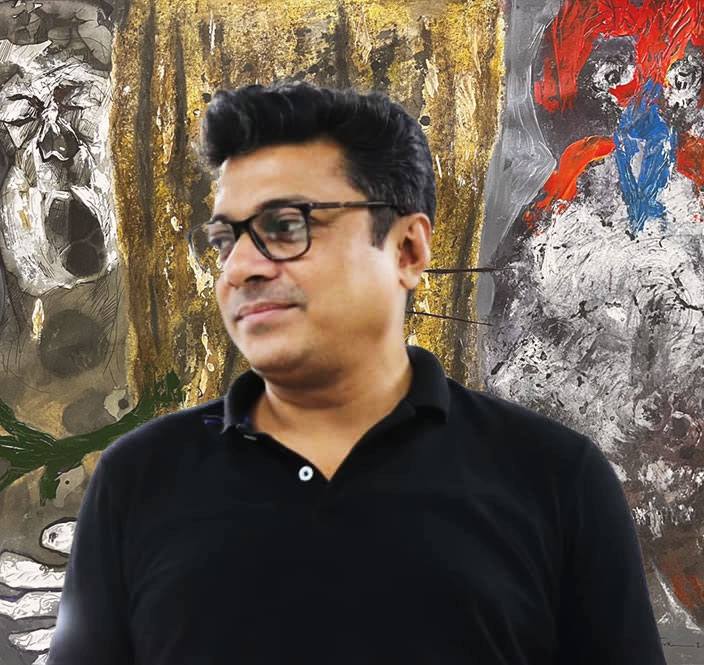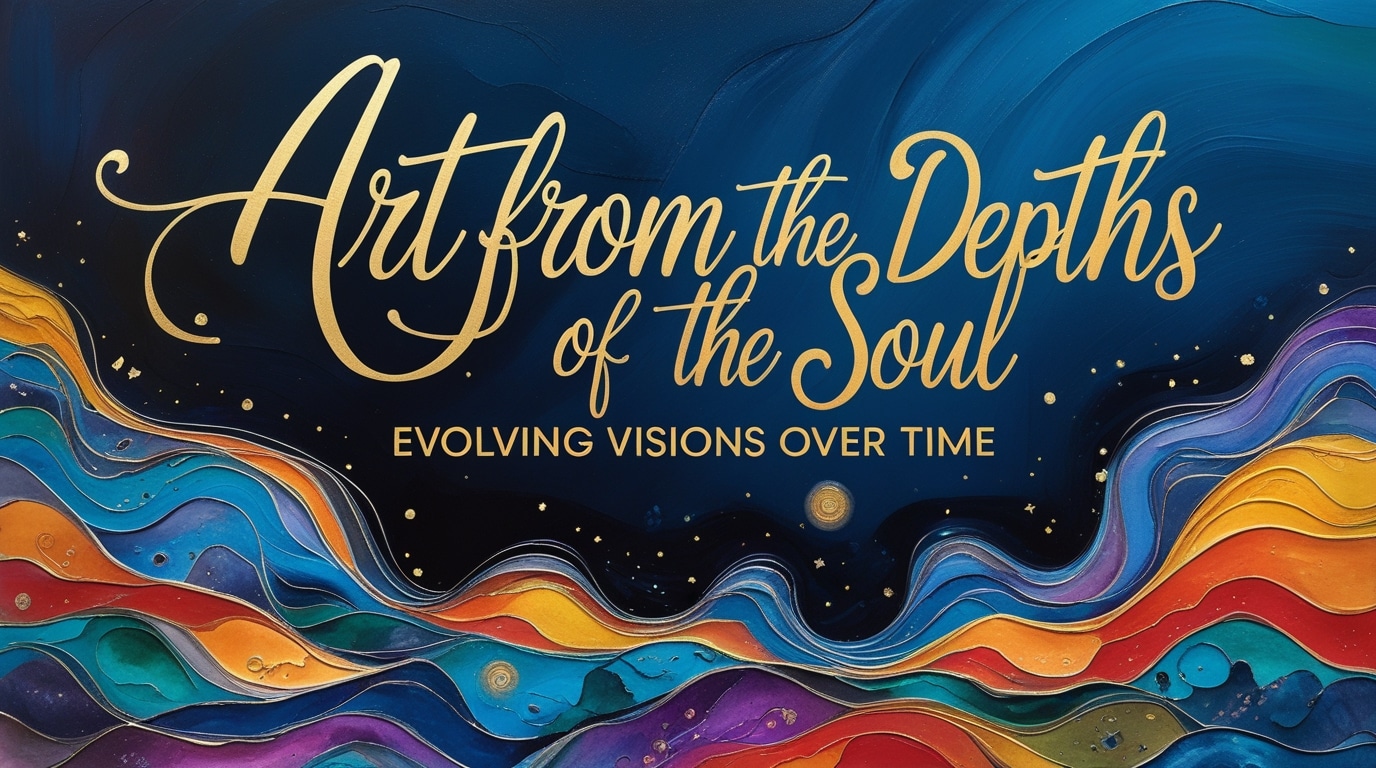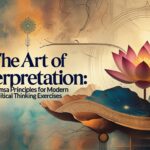Art from the Depths of the Soul: Evolving Visions over Time
Creating from Imagination and Soul
As an artist, I believe that the most authentic art comes from deep within one’s soul. Henry Ward Beecher captured this sentiment when he said, “Every artist dips his brush in his own soul, and paints his own nature into his pictures.” I resonate with this idea every time I pick up a brush. For me, art is indeed “the language of the soul” – a boundless way to connect my innermost self with the world around me. Whether I’m painting on canvas, sculpting, or exploring any other creative form, I find myself re-imagining the world through my imagination and spirit. Every artwork I create carries an imprint of my inner voice and emotional landscape. In essence, art is a manifestation of what I imagine, transformed into reality through skill and creativity.
Evolution of Artistic Style through the Decades
Over the years, my vision, style, and methods have naturally changed and evolved. In fact, I know I’m not alone in this – over decades, every artist experiences growth and transformation in their art. Truly, no artistic style is static. As time passes, new cultural and environmental influences arise (different places, shifting climates), new materials and technologies appear, and, of course, highly gifted individuals emerge to inspire others. All these factors contribute to shifts in artistic style. When I was younger, I would experiment broadly; now, decades later, I’ve refined a more distinct style that feels true to my matured perspective. Art history offers famous examples of such evolution. Pablo Picasso, for instance, famously transformed his style multiple times over his career – moving from the somber Blue Period to the warmer Rose Period and onward to revolutionary Cubism. Seeing how dramatically Picasso’s art changed in one lifetime inspires me and reaffirms that powerful creative energy is often accompanied by continual growth and change. Importantly, I’ve realized that this evolution is not just a linear path of “improvement,” but rather a reflection of a changing thinking process and personal growth. As I gain experience and knowledge, my work moves closer to realizing the visions I hold inside. By mastering techniques of color, form, or perspective, I can bring my art ever closer to the natural beauty or emotional truth that originally inspired it – allowing viewers to see the world through my eyes.
Influences on the Creative Process
While the core creative impulse remains constant, the way I execute my art and the style I work in have been shaped by the context in which I live. Key influences on an artist’s evolving process include:
Education and Knowledge:
Over time, expanding my education and training in art has introduced me to new techniques and theories. Each generation of artists builds on the last – for example, Renaissance masters developed a deep understanding of human anatomy and linear perspective to achieve more lifelike art. Learning from such advancements has given me tools to realize my imaginative visions better. As I acquired knowledge of different mediums and artistic principles, I found I could express ideas that I once only imagined, turning them into tangible works on canvas or other media.
Personal Growth and Mindset:
My individual experiences and evolving mindset have a profound effect on my style. With time and life experience, I’ve gained new insights and even shifts in philosophy. These inner changes have led me to experiment with different styles or themes that better express my matured worldview. This journey is highly personal – at one period of my life, I might be drawn to detailed realism, while at another, I turn toward bold abstraction – all depending on what I feel a need to convey at that time. In this way, my art mirrors my personal growth, with each phase of life bringing a new approach or focus to my creative work.
Environment and Surroundings:
The natural and social environment around me plays a vital role in shaping my art. I often draw inspiration from the world I live in. Nature’s beauty, for example, has stirred artists’ souls for centuries – I think of Claude Monet finding endless inspiration in his gardens and the play of light in nature (Monet once said, “The richness I achieve comes from Nature, the source of my inspiration.”) or Vincent van Gogh insisting that we listen to “the language of nature” rather than just painters’ conventions.
Claude Monet’s Bridge over a Pond of Water Lilies (1899) was inspired by his garden at Giverny. Monet’s own words, “the richness I achieve comes from Nature, the source of my inspiration,” emphasize how deeply an artist’s surroundings can influence their work.
Likewise, the culture, climate, and even political atmosphere of the era find their way into my art. If I’m living through dramatic social changes or immersed in a vibrant natural landscape, those elements will be reflected in what I create, whether consciously or unconsciously. I know that when I’ve been surrounded by turmoil, my colors and brushstrokes grew more intense and chaotic, whereas peaceful surroundings have brought out more harmonious compositions. In short, my environment seeps into the mood and subject matter of my work in countless subtle ways.
- Technological and Material Developments:
As the world develops, new materials and tools expand the ways art can be made. Innovations in art technology have certainly influenced my process. The invention of photography in the 19th century, for example, not only provided painters with new reference material but also pushed them toward entirely new styles. Realizing that cameras could capture reality with unmatched accuracy, painters had to reinvent art’s role.
In fact, Impressionism was one of the first movements shaped by photography, as artists accepted that the camera excelled at realism and thus began exploring other dimensions like light, color, and emotion. In my own experience, each new medium I’ve adopted – from traditional oil paints to modern digital tablets – has opened fresh creative possibilities. Trying a new tool or material often leads me to experiment with different techniques, sometimes changing the look of my art. Every technological advance, whether it’s better paint pigments or digital software, offers a chance to push my art in new directions. These innovations ensure that the way art is executed is constantly evolving.
All of these influences illustrate why art continuously transforms over time. The surrounding world and the artist’s inner development feed into the creative process, making art a living, evolving conversation between the artist’s soul and their era.
The Constant Core: Imagination and Vision
Despite all the changes in style or technique over time, I’ve found that one core factor in art remains unchanged: we create what we imagine. The fundamental impulse driving an artist – to give form to an inner vision or feeling – stays at the heart of every work of art. My individual style and process may vary significantly from one phase of life to another (and they may differ entirely from another artist’s approach), but the drive to express an imagined idea or emotion is the common thread linking cave paintings to classical sculptures to contemporary digital art. This is why, no matter the era or medium, art can resonate so deeply with people. Art is born from an authentic vision in the artist’s mind and soul, and through craft it becomes something tangible that others can experience. In other words, art is the bridge between imagination and reality. Every brushstroke or creative decision I make is ultimately guided by that original inner spark – the image or feeling I envision internally and seek to share with the world.
Conclusion
In summary, I continually re-imagine and execute art from the depths of my being. While my styles and methods evolve with time, the essence of art remains the same. Each artist’s journey (including my own) is shaped by personal growth, education, environment, and the changing world around us – leading to an ever-changing tapestry of artistic expression across the decades. Yet at its core, art is a profoundly personal and soulful pursuit: it is the process of giving form to the unseen visions within us. No matter how much our techniques improve or our styles diverge, we ultimately create what we imagine, translating the intangible stirrings of the soul into shareable beauty. This enduring truth links me with artists of all ages. The profound human desire to create – driven by imagination and nurtured by the world we experience – remains the heart of all art.


